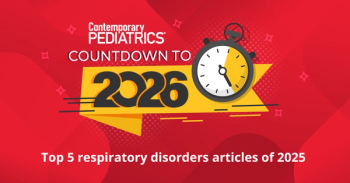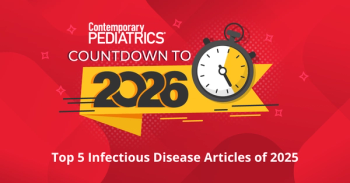
New research details rarity of gender-affirming medications prescribed to US adolescents
In this cross-sectional population of insured adolescents from 2018 to 2022, receipt of puberty blockers and hormones was rare.
In a newly-published cross-sectional study, the receipt of puberty blockers and hormones among transgender and gender diverse (TGD) adolescents in the United States was rare, and no patients under the age of 12 years in the study received hormones.1
The research, published in JAMA Pediatrics and conducted by researchers from Harvard T.H. Chan School of Public Health, Harvard Pilgrim Health Care Institute, and FOLX Health, noted that 300,000 adolescents aged 13 to 17 years (1.4%) identify as TGD in the US.2
Background
According to the study authors, the TGD topic has become highly politicized, with nearly half of states having enacted laws to limit access to gender-affirming medical care of adolescents.
"The politicization of gender-affirming care for transgender youth has been driven by a narrative that millions of children are using hormones and that this type of care is too freely given," said Landon Hughes, a lead study author and Yerby Fellow in Harvard Chan School’s Department of Epidemiology and postdoctoral fellow at Harvard Chan School and Harvard Pilgrim Health Care Institute’s LGBTQ Health Center of Excellence.1
Study details
Though previous research has documented the rarity of gender-affirming surgeries among adolescents, little is understood about hormone use in TGD adolescents. To further understand this gap, the investigative team evaluated private insurance claims data from 2018 to 2022, representing more than 5.1 million young patients aged 8 to 17 years, then further identified those who identified as TGD that received puberty blockers (GnRH agonists) or gender-affirming hormones, using diagnostic, drug, and procedural codes (receipt of exogenous hormones, histrelin implant, diagnosis of gender identity disorder).1,2
The authors then calculated the rate of adolescents with a TGD-related diagnosis who receieved this care per 100,000 total adolescents enrolled in insurance by age and sex assigned at birth, using the Wald method to calculate 95% CIs. The sex recorded at the earliest enrollment was used as a proxy for sex assigned at birth.2
Results
In the sample of 5,155,282 adolescents, yielding 11,879,766 person-years of data, less than 0.1% of minors with private insurance were TGD and received puberty blockers or gender-affirming hormones.1,2
According to results, the rate of receiving puberty blockers among adolescents was 20.81 (95% CI, 19.04-22.59) per 100 000 adolescents assigned female at birth (AFAB) and 15.22 (95% CI, 13.73-16.71) per 100 000 adolescents assigned male at birth (AMAB), wrote the study authors.2
The rate of receiving puberty blockers to AFAB adolescents was slightly higher than AMAB adolescents before 14 years of age.2
For the receipt of hormones, the rate was 49.9 (95% CI, 47.14-52.65) and 25.34 (95% CI, 23.42-27.27) per 100 000 AFAB and AMAB adolescents, respectively. Rates for the receipt of hormones increased after age 14 years, but remained low overall and peaked at 140.16 (95% CI, 128.01-152.32) per 100 000 for AFAB adolescents and 82.42 (95% CI, 73.25-91.59) per 100 000 among AMAB adolescents, according to the investigative team.2
“Our study found that, overall, very few TGD youth access gender-affirming care, which was surprisingly low, given that over 3% of high school youth identify as transgender," said the study's senior author, Jae Corman, PhD, in a press release. Corman is the head of analytics and research at FOLX Health.1
"Among those that do, the timing of care aligns with the standards outlined by the World Professional Association for Transgender Health, the Endocrine Society, and the American Academy of Pediatrics," said Corman.1
Collectively, the authors added, "These data are most generalizable to those with private insurance in large group plans, likely reflecting greater access to gender-affirming care. Thus, these rates may be the highest estimates, with lower rates expected among those with less comprehensive private insurance, Medicaid recipients, and the uninsured."2
References:
1. Harvard T.H. Chan School of Public Health. Gender-affirming medications rarely prescribed to US adolescents. Eurekalert. January 6, 2025. Accessed January 7, 2024. https://www.eurekalert.org/news-releases/1069371
2. Hughes LD, Charlton BM, Berzansky I, Corman JD. Gender-Affirming Medications Among Transgender Adolescents in the US, 2018-2022. JAMA Pediatr. Published online January 06, 2025. doi:10.1001/jamapediatrics.2024.6081
Newsletter
Access practical, evidence-based guidance to support better care for our youngest patients. Join our email list for the latest clinical updates.




